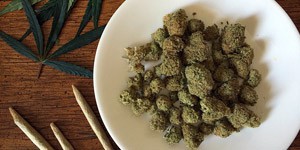By Mariano Garcia de Palau

Born in Barcelona, 17 February 1956. Graduated in medicine and surgery from the University of Barcelona in 1979. For 38 years has worked as an emergency physician in the area of occupational medicine. He became interested in cannabis by chance, and for the last 15 years has studied its therapeutic uses.
Currently he continues to advise on cannabinoid treatments and performs clinical work with patients, collaborates with various organizations and associations, serves as Senior Consultant for Grupo Curativa Colombia and is a spokesperson for the Spanish Medical Cannabis Observatory.
The term inflammatory bowel disease (IBD) includes two disorders or diseases of unknown etiology, involving genetic, autoimmune, environmental, infectious factors, etc. These diseases are ulcerative colitis (UC) and Crohn's disease (CD), which are defined according to clinical, radiological, endoscopic and histological. A series of tests must be performed to correctly diagnose the disease, since both treatment and prognosis are different.
The exact cause of inflammatory bowel disease is still unknown. In the past, it was suspected that it was related to diet and stress - now doctors know that these factors can aggravate the disease, but do not provoke it. Malfunction of the immune system is a possible cause. When the immune system tries to fight invasive viruses or bacteria, an abnormal immune response causes it to also attack the cells of the digestive tract. Hereditary factors also appear to influence, since inflammatory bowel disease is more common in people who have relatives with this disease. However, most people with inflammatory bowel disease have no family history.
Both occur chronically with the appearance of acute outbreaks in which inflammatory activity is increased, and therefore the symptomatology.
Ulcerative Colitis affects exclusively the mucosa, which is the inner layer of the colon wall. It is variable in extent, usually affecting a colon with distal predominance continuously.
In Crohn's disease inflammation involves the entire thickness of the wall of the intestine, and can affect any segment of the gastrointestinal tract from the mouth to the anus discontinuously, and complications such as granulomas, obstructive stenosis or fistulas may occur.
In cases where it is impossible to differentiate between UC and CD, indeterminate colitis is referred to.
The most frequent symptomatology includes intestinal colic pain, of varying intensity, diarrhoea appears uncontrollable in many cases, tenesmus appears when evacuating and feeling of incomplete emptying, there may be bleeding in the stool, fever, malaise, weight loss, asthenia and generalized fatigue.
The incidence of Crohn's disease and ulcerative colitis has increased tenfold in Spain over the last 25 years and now some 2000 new cases are detected, with an increase of 2.5% per year. It is estimated that there are about 150,000 patients in our country suffering from any of these pathologies. If we analyse the symptomatology, we can deduce that patients will have problems of absenteeism, also at the family level, with social environment, since especially during acute outbreaks there is a clear limitation to any activity, and these outbreaks appear without a predictable pattern in many cases, so it is difficult to carry on a normal life. In general, it is difficult to control the activity of the disease and there is unsatisfactory management of the symptoms.
What is the normal treatment for these diseases?
The administration of anti-inflammatory drugs is usually the first measure for the treatment of inflammatory bowel disease. These drugs include corticosteroids and amino salicylates. Immune system inhibitors or immunosuppressants work in different ways to inhibit the immune response that activates the cascade of cytokines that cause inflammation of the intestinal wall. For some people, a combination of these drugs works better than just one. Monoclonal antibodies are currently a therapeutic alternative to take into account. Other medicines and supplements frequently used are antidiarrheal drugs, analgesics, taking into account that NSAIDs (non-steroidal anti-inflammatory drugs) such as ibuprofen, diclofenac, naproxen, cannot be administered as they worsen the disease due to their negative gastric effects. Supplements of calcium and vitamin D are necessary, as well as a nutritional and dietary plan.
When all these measures are insufficient to control the disease, surgery may be required. In general, surgery may eliminate ulcerative colitis. But, in order to be effective the entire colon and rectum must be removed. Up to half of people with Crohn's disease will require at least one surgical intervention. However, surgery does not cure Crohn's disease. The benefits of surgery for Crohn's disease are usually temporary. The best approach is to follow surgery with medication in order to minimize the risk of recurrence.
Cannabis and Inflammatory Intestinal Disease. Therapeutic potential.
Many patients use alternative and complementary medicine for these pathologies, basically because of the poor control of the symptomatology and the side effects of the usual medication. 10% of IBD patients in Spain use cannabis for therapeutic purposes, in most cases without medical control or over the products used. Cannabis is gaining impact in the media: newspapers, Internet and TV. Although the information that may be accessed is not always correct, complete or objective. The Endocannabinoid System is not yet studied in medical schools, and doctors are discharged without even knowing its functioning or importance for the homeostatic balance of the organism.
Phytocannabinoids act through the Endocannabinoid System, and we are aware of the distribution of receptors in the digestive system:
There is expression of CB1 and CB2 receptors in all layers of the intestine (mainly in myenteric and submucosal plexus), GPR55 in the enteric nervous system and enterocytes, and TRPV1 in nerve terminals of extrinsic primary afferent fibres. This fact assumes that we can act on intestinal motility, gastric juice secretion, the immune system, epithelial growth and regeneration, appetite and pain control.
By combining different cannabinoids, as we will see below, we can control and modulate intestinal inflammatory processes. Control of epithelial permeability. It improves the closure of wounds and ulcers on the intestinal mucosa. Reduction of neutrophils T cell and macrophage recruitment and reduction of overexpression and secretion of pro-inflammatory mediators. Through CB1, CB2, TRPV1 receptors we can also regulate gastrointestinal motility, gastric and intestinal juice secretion and control nausea and vomiting associated with acute outbreaks in some patients.
We always insist on the low toxicity of cannabinoids when compared with other drugs, and their side effects are predictable and easily solvable, so they constitute a therapeutic alternative for these patients. The analgesic, anti-inflammatory, and anxiolytic effect we can obtain with cannabinoids is very interesting for control of symptomatology and stabilization of the disease.
With cannabinoids we can also regulate mood and sleep, without having to administer different drugs.
The cannabinoids we can give to patients would be CBD, CBG, CBN, THC.
Basically we aim to obtain an analgesic and anti-inflammatory effect, in addition to regulating the immune system. A basic treatment with CBD and CBG may be scheduled as maintenance treatment, we can also add CBN if there is a problem of insomnia, and THC would be relegated to acute phases or outbreaks, in which severe pain appears, acute colitis with diarrhoea, and with the addition of CBD and CBG, we can increase the analgesic and anti-inflammatory effect. There are patients who always need THC, in different proportions or ratios, to better control the symptoms. Other patients may be stabilized with CBD alone and do not require the use of other cannabinoids. It is necessary to check which cannabinoids are the most interesting and effective for the disease of each patient. Treatments may be administered orally, sublingually, or via rectal, according to each patient, although the most common is the use of oils via the sublingual route. As they are chronic diseases, they require continued treatment, but when using THC, we must schedule an annual break of at least one month, to eliminate the accumulated THC in the fatty tissue. These breaks are performed at times when the patient is feeling better and can do without THC for a month or so.
The use of THC in these patients is controlled in relation to its psychoactive effect. The ratio of CBD and THC allows us to work without the patient suffering a limiting psychoactive effect for their activities.
The limited efficacy and side effects of conventional treatments make the use of cannabinoids very interesting for many patients, as it allows them greater control over the disease, with an improvement in quality of life, which in many cases is bad, as these pathologies are very limiting to normal life for the majority of patients.


